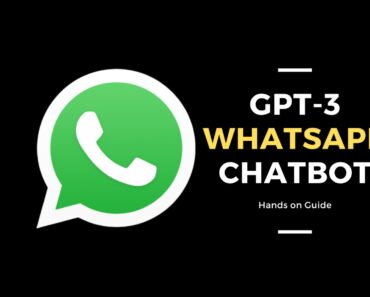Table of Contents
Overview of the tools and technologies
- GPT-3 (Generative Pretrained Transformer 3) is a powerful language processing API developed by OpenAI. It can be used to generate natural language text and understand user inputs.
- Twilio is a communication platform that allows developers to integrate messaging, voice, and video into their applications. In this case, it will be used to connect our chatbot to the WhatsApp messaging service.
- FastAPI is a modern, fast (high-performance), web framework for building APIs with Python 3.6+ based on standard Python type hints. It will be used to create the chatbot’s logic and handle requests and responses between the chatbot and the user.
set up and configure chatGPT / GPT-3 API and Twilio
- Sign up for an account on the OpenAI website and obtain an API key for accessing the GPT-3 API.
- Install the GPT-3 API Python library using pip:
pip install openai - Set up a Twilio account and obtain a WhatsApp messaging API key and a Twilio phone number.
- Install the Twilio Python library using pip:
pip install twilio - Configure the Twilio phone number to be able to send and receive messages from the WhatsApp messaging service.
- Test the GPT-3 API and Twilio integration by sending a sample message from the Twilio phone number to a designated WhatsApp number.
Creating the chatbot logic using FastAPI and integrating it with chatGPT / GPT-3 and Twilio
Install the FastAPI Python library using pip: pip install fastapi
Define the chatbot logic and handling of user inputs using FastAPI and the GPT-3 API.
Save the below code in a python file called main.py
from fastapi import FastAPI
from twilio.rest import Client
import openai
# Set your OpenAI API key
openai.api_key = “your_api_key”
app = FastAPI()
@app.get(“/”)
def send_message():
# Your Twilio account SID and auth token, which can be found in your Twilio account settings
account_sid = “ACXXXXXXXXXXXXXXXXXXXXXXXXXXXXXXXX”
auth_token = “your_auth_token”
# Your Twilio phone number
from_number = “+15551234567”
# The phone number you want to send the message to
to_number = “+15559876543”
# Create a Twilio client
client = Client(account_sid, auth_token)
# The prompt or context for the text you want to generate with GPT-3
prompt = “Hello there! How can I assist you today?”
# Generate the response text using GPT-3
response = openai.Completion.create(
engine=”text-davinci-002″,
prompt=prompt,
max_tokens=1024,
n=1,
temperature=0.5
)
# Get the generated response text
response_text = response[“choices”][0][“text”]
# Send the message using Twilio
message = client.messages.create(
body=response_text,
from_=from_number,
to=to_number
)
return {“message”: “Message sent successfully!”}
Make sure to add your openai API key, your twilio SID, token and from phone number at the appropriate place.
Once done, you can run this from the command line: uvicorn main:app –reload
Make sure to set your server URL in the Twilio WhatsApp sandbox.
Now you are ready to receive and respond to WhatsApp messages in your chatbot.
Conclusion
In this step-by-step guide, you saw how to use Twilio and GPT-3 API to respond to WhatsApp messages automatically in a human-like way. Try it out and see how it works out.



